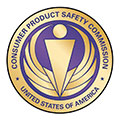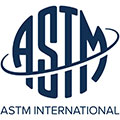Does YOUR playground really have to be ADA compliant?
The short answer is – YES. The Americans with Disabilities Act (ADA) is an all-inclusive civil rights law that prohibits discrimination on the basis of disabilities. The ADA requires that newly constructed and altered … recreational facilities, including play areas, are among the facilities required to comply with the ADA.
But making your play space accessible doesn’t have to be complicated or expensive. Adventure Playground Systems is here to help you navigate the intricate regulations and compliance issues that hinder commercial green spaces. Understanding that ADA compliance is all about making sure everyone is afforded the opportunity to play makes following the rules a lot easier.

Feel free to share this graphic by copying and pasting the code as it appears below!
PLAY COMPONENTS
A play system or playground, at its essence, is really a composite collection of play components. ADA guidelines ensure that those components and the type of entertainment they offer are spread out in a way that allows all children to play regardless of mobility and aptitude. The largest difficulty associated with ADA regulations and playgrounds comes in understanding component types, designations, and accessibility pathways.
ACCESSIBLE ROUTES
Accessible routes or pathways are simply the paths in which a disabled person can move around your site unencumbered. This pathway links ground-level components and composite structures with ADA transfer stations to entrances and facilities also located on your site. They have strict codes to ensure wheelchair accessibility and ease of movement. A 60-inch width enables two wheelchairs may pass each other or change direction when desired. A 1:16 max slope ensures easy movement along the pathway.
ADA guidelines generally separate components found on a playground and on accessibility pathway into three classifications:
Elevated Play Components
An elevated play component is a play component that is approached above or below grade. Play components that are attached to a composite play structure and that can be approached from a platform or deck area are considered elevated play components as well. Consider a traditional slide. To enter the actual slide you must first climb either onto a system or up a ladder on a stand-alone piece. This is a perfect example of an elevated play component.
Ground Level Play Components
Ground-level play components are items that can be approached and exited at ground level. For example, a child approaches a spring rider at ground level via the accessible route. The child may ride then exit directly back onto the accessible route. The activity is considered ground level because the child approaches and exits it from the ground-level route.
Components Accessible via Transfer Station
Elevated components that are made accessible on a composite play structure by the use of a transfer station may add to the ADA Accessibility of your site assuming that the structure is on the “accessibility route.”
Ground-level play components required to be on an accessible route is determined by the number of elevated components provided in the play area and the type of play offered. The intent of this requirement is to provide a variety of adventures for those who choose to remain with their mobility aids or choose not to transfer to elevated play components at all.








